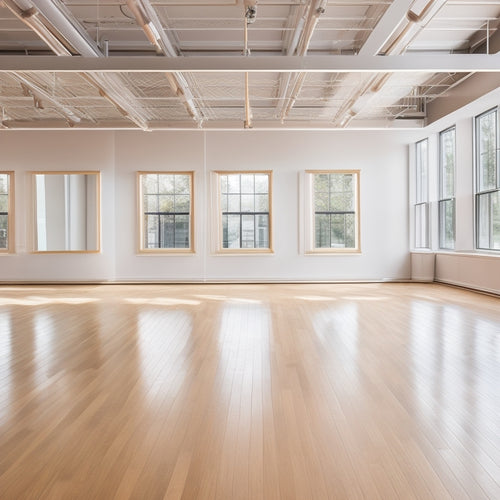
Can I Use a Pillowcase as a Garment Bag?
Share
You can repurpose a pillowcase as a makeshift garment bag, leveraging the design parallels between these household items to protect and store your delicate garments. Consider the fabric type, size, and fit to guarantee a protective fit. Breathability and moisture protection are essential, so choose a breathable fabric like cotton or linen. Delicate fabrics require extra precautions, and clever packing strategies can prevent wrinkles and damage. As you explore this DIY solution, you'll uncover more creative ways to safeguard your garments - and the advantages of thinking outside the box (or bag).
Key Takeaways
• A pillowcase can be repurposed as a makeshift garment bag to store and protect delicate items.
• Choose a breathable fabric like cotton or linen to prevent moisture buildup and mildew.
• Consider the size and fit of the pillowcase to ensure a snug, protective fit for your garments.
• Delicate fabrics require extra precautions, such as acid-free tissue paper and silk wrapping to prevent creasing.
• Measure your garments carefully to ensure they fit in the pillowcase and pack strategically to prevent wrinkles.
Similarities Between Pillowcases and Garment Bags
As you explore the world of unconventional garment storage, you'll find that pillowcases and garment bags share a surprising number of similarities. Both are designed to protect and store delicate items, albeit in different contexts. This overlap in purpose has led to intriguing design parallels between the two.
You might be surprised to discover that pillowcases, typically used for bedding, can be repurposed as makeshift garment bags. This unconventional use highlights the versatility of these humble household items. By recognizing these similarities, you can reveal creative solutions for storing your garments.
Fabric Types and Durability
As you select the perfect pillowcase for your garment bag, you'll need to evaluate the fabric type, because it's vital for durability.
You'll want to weigh the pros and cons of cotton versus polyester, and think about how breathable you need the fabric to be.
The weight of the fabric will also impact its performance, so it's important to get it just right.
Cotton Vs Polyester
You're likely familiar with two popular fabric options for pillowcases - cotton and polyester - but which one will better withstand the rigors of travel and keep your garments looking their best?
When it comes to durability, cotton is often the top choice. Look for a high thread count, which indicates a tighter weave and increased softness. Cotton fabric weaving is typically tighter, making it less prone to snags and tears.
Polyester, on the other hand, can be more prone to pilling and running. While it may be more affordable, it may not provide the same level of protection for your garments.
If you want a pillowcase that will keep your clothes looking their best, cotton is the way to go. Its natural fibers and tight weave make it the perfect choice for a garment bag.
Breathability Matters
When packing delicate or sensitive fabrics, it's crucial to select a pillowcase that allows for airflow, guaranteeing your garments don't arrive at their destination wrinkled, creased, or even damaged from trapped moisture. You want a fabric that promotes air circulation, allowing moisture to escape, rather than trapping it inside.
Look for pillowcases made from breathable fabrics with high fabric porosity, such as cotton or linen. These natural fibers will help regulate humidity and prevent moisture buildup, keeping your garments fresh and protected.
Fabric Weight Counts
Your choice of pillowcase fabric weight greatly impacts the protection and transport of your garments, with heavier weights generally offering more durability and stability.
As you consider using a pillowcase as a garment bag, remember that thread count importance can't be overstated. A higher thread count typically indicates a denser weave, which translates to better fabric density impact. This means your garments will be better protected from wrinkles and creases. Opt for a pillowcase with a thread count of at least 200 for best results.
Size and Fit Considerations
As you prepare to repurpose a pillowcase as a garment bag, determining the ideal size and fit becomes crucial to guarantee a snug, protective fit for your delicate items. Consider the folded dimensions of your garments and the body type they're designed for.
For instance, if you're storing a flowing maxi dress, you'll need a larger pillowcase to accommodate its loose silhouette. Conversely, if you're storing a fitted blazer, a smaller pillowcase will suffice.
Measure your garments carefully, taking into account any embellishments or padding that may affect the fit. By doing so, you'll make sure your pillowcase-turned-garment bag provides the perfect fit, keeping your clothes safe and secure during storage or transport.
Breathability and Moisture Protection
Protecting your garments from moisture and humidity is vital, so you'll want to choose a pillowcase made from a breathable fabric, such as cotton or linen, to make sure air can circulate and prevent mold or mildew from forming. This is especially important if you plan to store delicate or sensitive fabrics.
Look for pillowcases with natural fibers or those treated with moisture-wicking fabric coatings to keep your garments dry. Avoid pillowcases with waterproof or water-resistant coatings, as they can trap moisture and create a humid environment. Instead, opt for breathable moisture barriers that allow air to circulate while keeping your garments protected.
Delicate Fabric Storage Concerns
When storing garments made of delicate fabrics, such as silk, velvet, or lace, you'll need to take extra precautions to prevent damage or creasing.
Fabric folding is an important step in preserving the integrity of these fabrics. To avoid creasing, consider silk wrapping, which involves wrapping your garment in acid-free tissue paper before placing it in the pillowcase. This method allows the fabric to breathe while preventing wrinkles.
For added protection, you can also use a layer of muslin or cotton cloth between the pillowcase and your garment.
Zippers and Closure Systems
When converting your pillowcase into a garment bag, you'll need to take into account the type of zipper that'll keep your clothes secure.
You'll want to select a zipper that's smooth to operate and won't catch on your fabrics.
Think about choosing a sturdy separating zipper or an invisible zipper for a sleek, professional finish.
Zipper Types Matter
You'll find that selecting the appropriate zipper type for your pillowcase garment bag is essential, since it can determine the overall functionality and durability of your handmade storage solution.
Here are some zipper types to take into account:
-
Invisible Zippers: Perfect for a sleek, hidden closure.
-
Separating Zippers: Ideal for easy on and off, with sliding teeth that separate completely.
-
Hidden Zippers: Concealed from view, these zippers provide a seamless look.
- Water-Resistant Zippers: Great for protecting your garments from moisture.
When choosing a zipper, think about the level of protection and ease of use you need. By selecting the right zipper type, you'll make sure your pillowcase garment bag is both functional and stylish.
Secure Closure Options
To guarantee your pillowcase garment bag stays securely closed, you'll want to explore a combination of zippers and closure systems that provide an additional layer of protection and peace of mind. This is especially important when transporting delicate or high-value items.
| Closure Option | Benefits | Considerations |
|---|---|---|
| Zippers | Quick and easy to use, can be paired with other closure options | Can be noisy, may not be suitable for delicate items |
| Magnetic Snaps | Easy to use, gentle on fabrics | May not be suitable for heavy or bulky items |
| Velcro Straps | Adjustable, gentle on fabrics | Can be noisy, may not be suitable for delicate items |
Hanging and Storage Options
Your pillowcase garment bag demands careful hanging and storage to maintain its shape and prevent wrinkles. It is essential to choose the right hanging and storage solutions that cater to your specific needs.
To guarantee your garment bag stays in top condition, consider the following options:
-
Foldable Racks: Perfect for compact storage, these racks can be easily set up and taken down as needed.
-
Stackable Shelves: Ideal for maximizing storage space, these shelves provide a stable and organized way to store your garment bag.
-
Hanging Organizers: Keep your garment bag protected from dust and creases with hanging organizers that provide ample storage and easy access.
- Closet Dividers: Segment your closet space with dividers that keep your garment bag separate from other clothing items, reducing clutter and maintaining organization.
Travel and Portability Issues
When you're on-the-go, you want to make sure your garments arrive at their destination in pristine condition.
As you prepare for travel, you'll need to think about how to pack delicate items, protect your garments during transit, and work within the limitations of your makeshift garment bag's size.
Packing Delicate Items
By cleverly packing delicate items like evening gowns or suits in a pillowcase, you'll guarantee they arrive at your destination wrinkle-free and protected from damage. For fragile handling, consider the following tips:
-
Delicate wrapping: Wrap each item individually in tissue paper or cloth to prevent scratching and creasing.
-
Fragile folding: Fold items like lingerie or silk dresses in a way that minimizes creasing and stress on the fabric.
-
Protective padding: Add extra padding like bubble wrap or packing paper to cushion your items and absorb shocks.
- Breathable storage: Make sure your pillowcase is breathable to prevent moisture buildup, which can damage your garments.
Protecting Garments in Transit
To guarantee your delicate garments arrive at their destination unscathed, you must take into account the rigors of travel and the significance of portable protection.
When packing for travel, it's crucial to employ clever packing strategies that guarantee your garments remain wrinkle-free and damage-free. Investing in travel accessories like garment bags or covers can make all the difference. These specially designed bags provide an extra layer of protection against creases, tears, and snags.
Bag Size Limitations
Your garment bag of choice may be perfect for protecting your clothes, but its size can become a significant limitation when traveling, forcing you to make tough packing decisions.
When using a pillowcase as a garment bag, you'll need to take into account the size constraints. Here are a few things to keep in mind:
-
Measure your garments: Before packing, measure your garments to make sure they'll fit in your makeshift bag.
-
Choose the right pillowcase: Opt for a larger pillowcase to accommodate bulkier items or consider using a compression bag for extra space.
-
Pack strategically: Roll your clothes to save space and reduce wrinkles.
- Check sizing charts: Refer to sizing charts to make sure your garments will fit in the pillowcase-turned-garment-bag.
Cost and Convenience Comparison
How much are you willing to spend on a garment bag, and what level of convenience are you expecting in return? When comparing a pillowcase to a traditional garment bag, it's essential to consider the cost and convenience factors.
| Option | Cost | Convenience |
|---|---|---|
| Pillowcase | $0 (you likely have one at home) | Low (manual folding and packing required) |
| Economical Garment Bag | $10-$20 | Medium (easy to use, but may not be as sturdy) |
| High-End Garment Bag | $50-$100 | High (durable, easy to use, and often with additional features) |
Using a pillowcase as a garment bag can be an economical swap, but it may require more time and effort. If you're looking for a convenient and time-saving solution, investing in a garment bag might be the better option.
Alternative Solutions and Options
Explore beyond the pillowcase and traditional garment bag options, and you'll discover a range of alternative solutions that cater to different needs and preferences.
If you're looking for sustainable alternatives, consider the following options:
-
DIY Upcycling: Breathe new life into old materials like vintage sheets, towels, or clothing items to create unique garment bags.
-
Repurposed Fabric Bags: Utilize reusable tote bags, canvas bags, or even old backpacks to store and transport your garments.
-
Travel Pouches: Invest in compact, multi-use travel pouches that can double as garment bags for delicate items.
- Clothing Storage Cubes: Opt for compact, breathable storage cubes that keep your garments organized and protected.
These alternatives offer creative, eco-friendly solutions for storing and transporting your garments.
Frequently Asked Questions
Can I Use a Pillowcase for a Wedding Dress?
When preserving your wedding dress, you'll want a breathable, acid-free fabric to prevent yellowing, so using a pillowcase might not be the best choice; instead, opt for a high-quality, specifically designed dress preservation bag.
Will a Pillowcase Protect My Garment From Wrinkles?
When you slip your garment into a pillowcase, you're banking on the fabric softness and breathable material to safeguard against wrinkles. But, darling, it's a gamble – a pillowcase might not provide the structured protection your garment needs.
Can I Use a Pillowcase for International Travel?
"When traveling abroad, you'll want packing strategies that work; using a pillowcase as a makeshift garment bag is a clever travel hack, but consider TSA regulations and fragile item protection before giving it a try."
Will a Pillowcase Fit in a Carry-On Luggage?
You're likely one of the 50% of travelers who've struggled with luggage space; now, packing strategies and travel hacks are your game. A pillowcase will fit in a carry-on, but will you be able to squeeze everything else in too?
Can I Wash a Pillowcase After Using It as a Garment Bag?
"You'll want to wash that pillowcase after using it as a garment bag! Check the care label, but most pillowcase fabrics can be machine washed in cold water with a mild detergent, following gentle laundry tips to prevent shrinkage."
Related Posts
-

Best Studio Mirrors for a Professional Dance Space
Choosing the best mirrors for your professional dance space can enhance your practice. High-quality glass mirrors pro...
-

Legal Battle: TikTok's Makeup Looks Ownership Uncertainty
TikTok's rise in popularity has sparked a legal battle over makeup looks ownership, leaving creators vulnerable to ex...
-

Unleash the Secrets of Shinobi: Genesis Manual
The Shinobi: Genesis Manual is a treasured resource for enthusiasts, offering an in-depth exploration into the intric...


